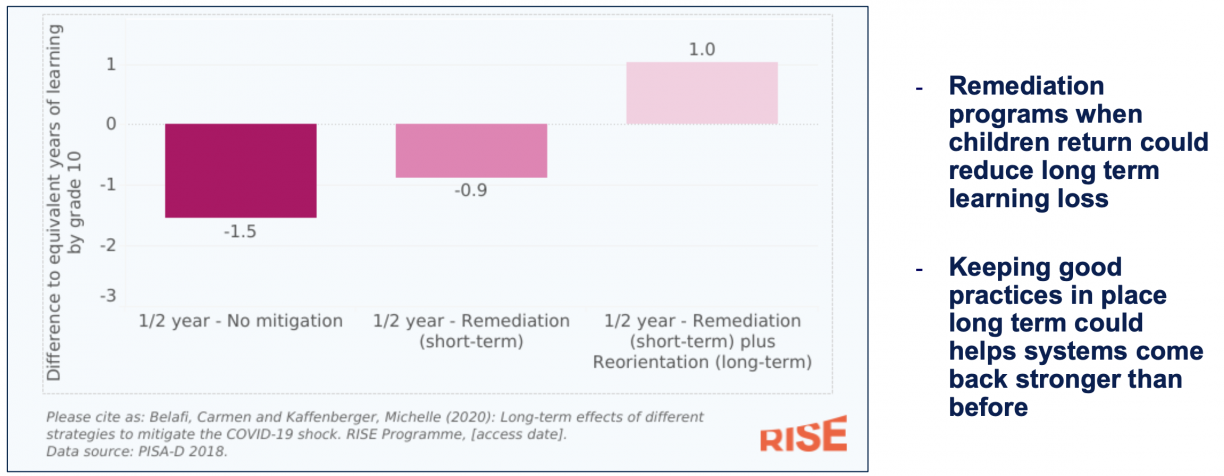Joseph Bullough
Blavatnik School of Government, University of Oxford
Blog
On the third day of the annual UNU-WIDER Conference on 8 September, RISE presented findings from three studies on COVID-19's impact on education systems. These studies underline the urgent need to remediate learning losses, but they also illustrate how systems can ‘build back better’.
RISE’s panel on the third day of the UNU-WIDER Conference last month set out to shed light on the longer-term impact of COVID-19 on children’s learning outcomes. Three studies were presented: simulations of potential learning losses, actual empirical measures of learning lost in Nigeria, and a study of efforts to remediate and recover from the pandemic in Pakistan.
Taken together, the three presentations highlighted the ways in which the pre-existing learning crisis has been exacerbated by COVID-19 and underlined the need for immediate responses to remediate losses by prioritising foundational skills, assessing children on return, and aligning instruction with children’s new levels. Simultaneously, they highlighted the potential that recovery (if done right) has to drive long-term systems change that brings instruction and children’s levels into better alignment.

COVID-19 could cause losses that far exceed the actual time schools have been closed, because learning losses can continue to build after children return to school; when children re-enter school behind the curriculum, they continue falling further behind without remediation.

Empirical evidence shows large learning losses during school closures, but also successful efforts at recovery of lost learning.



The recording for this panel will be available in the coming weeks on the UNU-WIDER Conference YouTube page.
RISE blog posts and podcasts reflect the views of the authors and do not necessarily represent the views of the organisation or our funders.